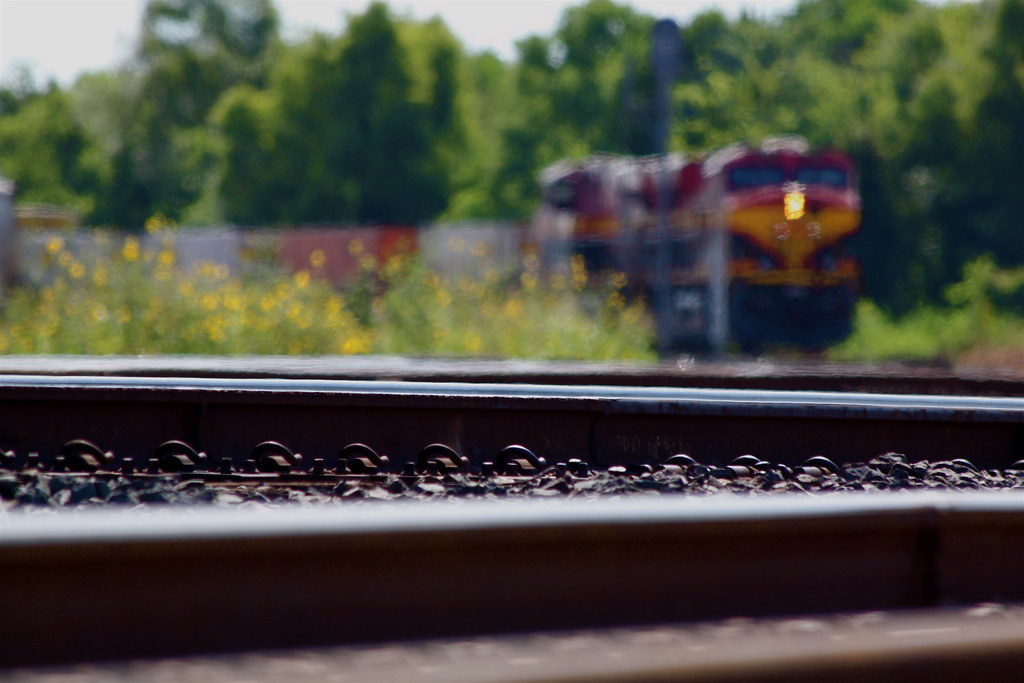
Rosenberg Junction is a popular train observation spot located in Rosenberg, Texas. Known for its rich railroad history, it offers enthusiasts a unique vantage point to watch a variety of freight and passenger trains pass through. The junction is a key intersection for several major rail lines, making it a bustling hub of activity. Visitors can enjoy the sight and sound of trains in a scenic setting, often capturing photographs and videos of the diverse rail traffic.
Photos
Sign in to upload photos
No Photos Yet
Be the first to share photos of this location!
Rosenberg Junction – Rosenberg, Texas, USA | Train Spotting Location
Trainspotting Experience
A typical visit delivers a constant soundtrack of horns, wheel flanges, and rumbling GE widecabs. Two mainline tracks cross at grade, forming a diamond that lets you watch meets, roll-bys, and occasional stack-ups as dispatchers juggle priority between east-west and north-south traffic. From the museum parking lot or the public sidewalk along Avenue F, you stand barely 30 ft from the rails; locomotives thunder past at track speed, then grind down to 10–15 mph when lined across the diamond. Expect loud airhorn echoes off nearby brick storefronts, ground-shaking vibration underfoot, and the unmistakable metallic squeal as long freights negotiate the crossing. Night spotting is equally dramatic—sodium-vapor streetlights silhouette passing trains, and the illuminated block signals give advance warning of approaching movements.
Landscape, Setting & Local Atmosphere
Rosenberg sits on the flat Gulf Coastal Plain at roughly 90 ft elevation, so sightlines are open for half a mile in every direction. Low bermuda grass, scattered pecan and live-oak trees, and the occasional stand of tall prairie cane line the right-of-way. Summer brings humid heat and sudden thunderstorms; winter is mild with long stretches of clear blue sky. The low horizon, big Texas clouds, and the faint smell of creosote ties create a classic South-Central railroading ambiance. Despite being in town, the setting feels relaxed—crickets chirp from drainage ditches and distant church bells mingle with locomotive horns.
Type & Frequency of Train Activity
• Union Pacific Sunset Route: 35–45 freight trains per 24 hours, dominated by mixed manifests, unit grain trains, and high-priority intermodal blocks running between Los Angeles, El Paso, and Houston.
• BNSF Galveston Subdivision: 12–18 daily movements, including unit rock ballast trains from Houston’s limestone pits, ethanol and crude oil blocks, and intermodal traffic for the Port of Galveston.
• Passenger: Amtrak’s tri-weekly Sunset Limited (#1 westbound, #2 eastbound) passes through at around 9 AM and 6 PM respectively, offering a splash of Superliner stainless steel among the freights.
Typical freight lengths range from 80 to 150 cars, with distributed power units common on heavier UP trains. Track speed on the approaches is 50–60 mph, throttling down to restricted speed over the diamond.
Best Angles for Photos & What Railfans Enjoy Most
- Tower 17 Platform: A wooden deck on the museum grounds places you eye-level with cab windows. Morning light favors eastbounds; late afternoon backlights westbounds with golden Texan sun.
- Avenue F Sidewalk: Stand on the north side of the street for side-profile shots of BNSF trains heading to Galveston; telephoto lenses compress the diamond and capture both railroads’ power on a single frame.
- Commerce Street Overpass (¼ mile east): Offers a slightly elevated panorama of the entire plant; late afternoon light glints off rooflines and signal masts.
Backdrops include the cream-colored façade of the museum, vintage water tower lettering “ROSENBERG,” and wide-open Texas sky—elements that give photographers a choice between industrial grit and small-town charm.
Historical or Cultural Relevance
The crossing was established in 1880 when the Gulf, Colorado & Santa Fe intersected the Galveston, Harrisburg & San Antonio Railway. In 1903, interlocking Tower 17 began controlling train movements and soon became one of Texas’ busiest mechanical plants. After 101 years of service, the tower was decommissioned in 2004, moved 200 ft west, and restored as the centerpiece of the Rosenberg Railroad Museum. Inside, original Armstrong levers and track diagrams illustrate pre-CTC operations, linking today’s diesel era with the steam age that forged the town’s identity.
What Makes This Spot Different
Few locations combine a live Class I diamond, publicly accessible close-range viewing, and a preserved interlocking tower in the same frame. Unlike rural hot spots where fans shoot from shoulderless roadsides, Rosenberg Junction offers legal parking, shade trees, and interpretive exhibits steps away—yet the trains remain unfiltered, heavy, and frequent. The mingling of two mega-carriers means a constantly changing parade of motive power: UP’s yellow widecabs might be followed minutes later by BNSF warbonnet rebuilds or GEVOs in fresh “swoosh” schemes. Add the rare but welcome sight of Amtrak’s Sunset Limited, and a day here feels like a condensed seminar on modern Gulf Coast railroading.
Seasonal Information
Rosenberg Junction in Texas is ideal for train watching year-round. Spring and fall offer mild weather and vibrant scenery. Summer can be hot, so stay hydrated. Winter provides unique views but check for delays. Longer daylight in summer allows more observation time. Enjoy diverse rail traffic and capture great photos.
Other Interesting Locations
Looking for more spots? Browse the complete list of train spotting locations.
Quick Information
Country
USA
Region / State / Province
Texas
City
Rosenberg
Spot Type
Yard
Best Times
The best hours to observe trains at Rosenberg Junction are during peak times: weekdays 7-9 AM and 5-7 PM, with frequent freight activity throughout the day.
